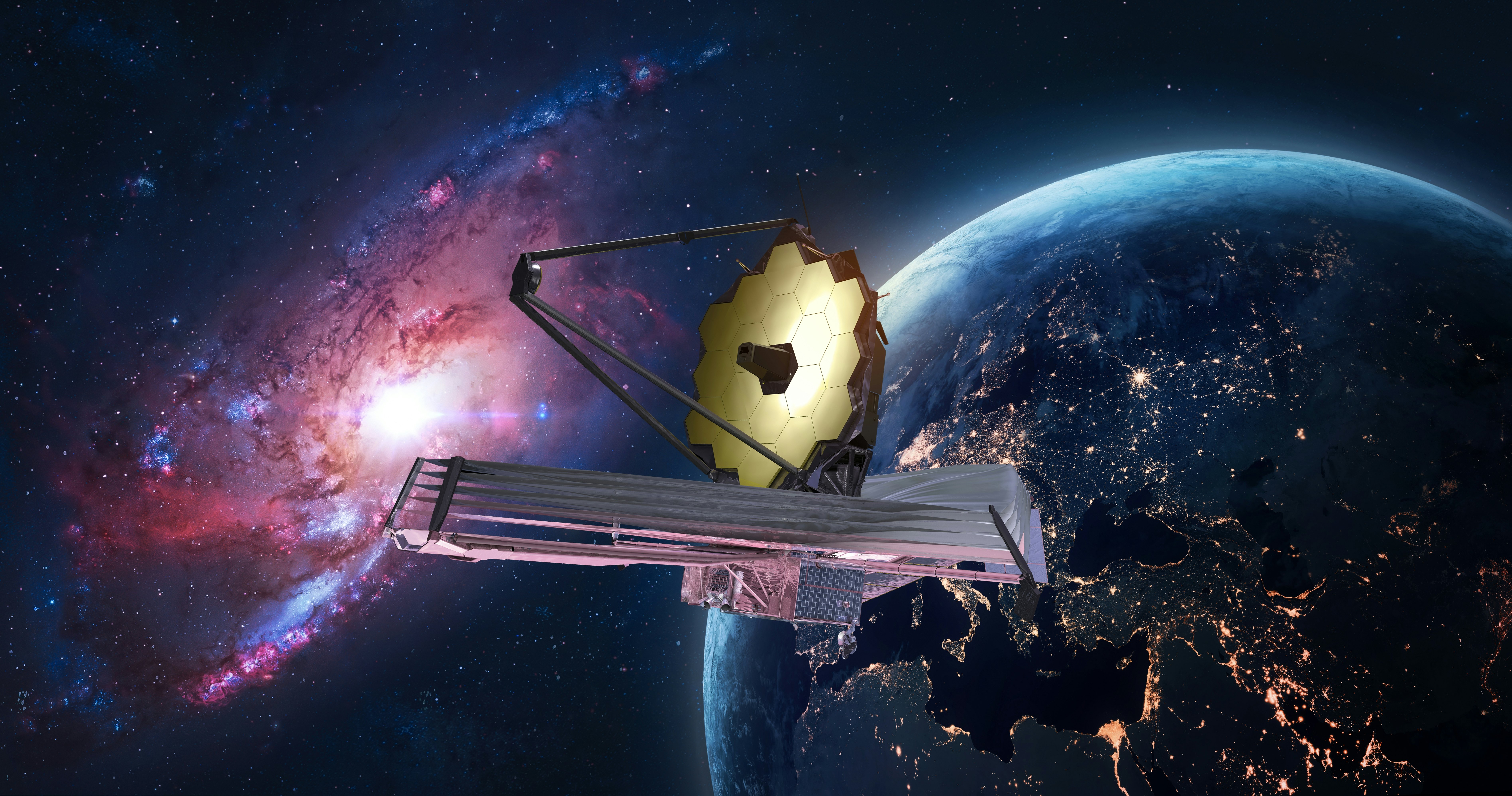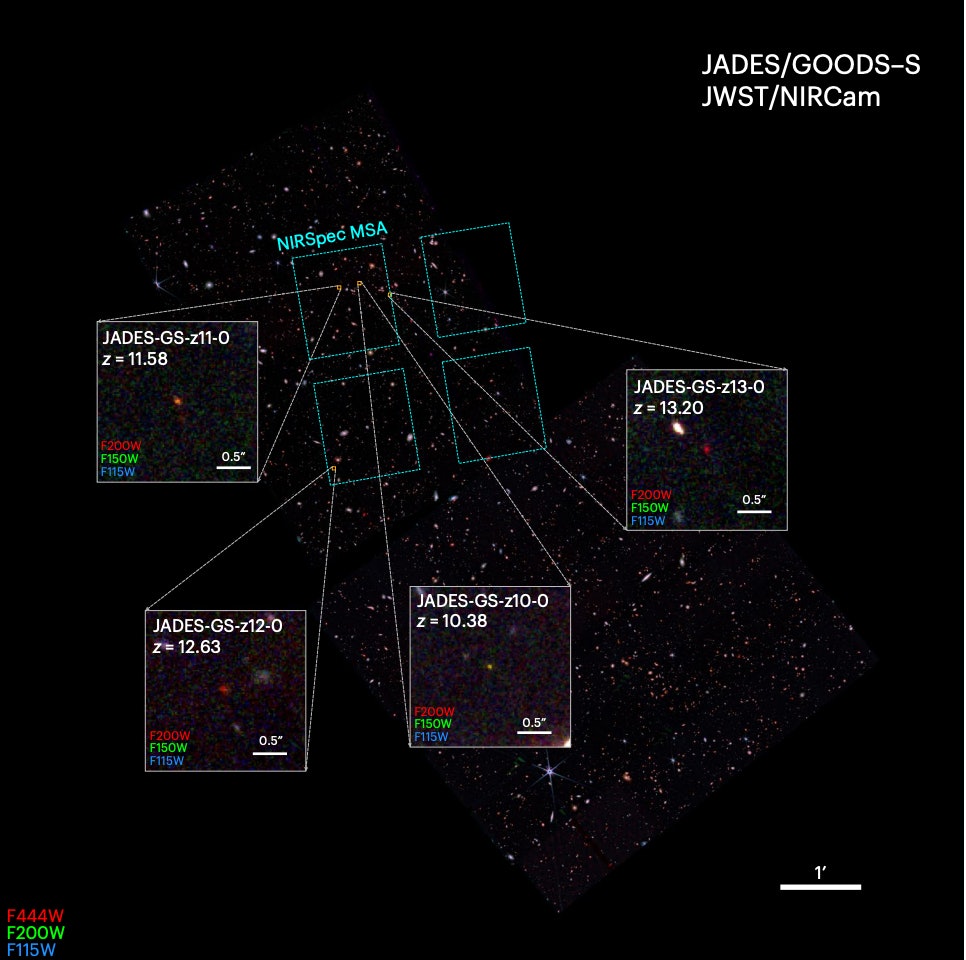
To say that the formation of the earliest galaxies a few hundred million years after the Big Bang was a momentous occasion is an understatement. Since astronomers first proposed they were their own “island universes” a century ago, the line of galaxies we have been able to detect has been pushed further and further away and further and further back into the history of the universe—all the way back to the first era of the emergence of galaxies.
This week, a new candidate for the earliest galaxy — and the earliest to be confirmed spectroscopically — has been identified, dubbed JADES-GS-Z13-0. It formed just 320 million years after the Big Bang, when the intergalactic medium was still made up of murky, neutral hydrogen. A pair of studies published this week in Nature give a peek at not just the most distant galaxy yet discovered, but the processes that have shaped matter in the Universe ever since.
The four distant galaxies were discovered as part of a collaboration between two teams using two different instruments on JWST. Beginning in the early 2000s, the Great Observatories Origins Deep Surveyor (GOODS) used the Hubble and Spitzer Space Telescopes along with the Chandra and Newton X-ray Observatories and various ground-based telescopes to image two sections of the sky as deeply as possible.
The two teams, known together as the JWST Advanced Deep Extragalactic Survey (JADES), decided to go back over the southern field from GOODS with the much more powerful equipment on JWST.
Because light traveling across billions of years of the expansion of the universe is stretched, it’s pushed into the infrared. Brent Robertson, an astronomer at UC-Santa Cruz and the lead author on one of the papers, tells Inverse that relative to Hubble, JWST “is a bigger telescope and a larger mirror, which makes it more sensitive, specially designed in terms of the camera and the coatings of the mirror and the optics to work well in the infrared.”

A Different Eye On Things
In addition to being able to image in near-infrared with a camera called NIRCam, JWST is also equipped with a near-infrared spectrograph, NIRSpec. Spectroscopy “allows us to pinpoint very exactly what the distance to those galaxies are,” Robertson says. This is because it allows astronomers to see just what elements those galaxies are made of.
From time to time, interlopers appear: galaxies that seem to be ancient, but are actually much closer by. But although those impostors look red enough to be from the dawn of the universe, the mix of radiation they emit doesn’t actually match.
If you peer far enough back in time, the hydrogen gas that hangs out between galaxies—the interstellar medium—hasn’t yet been ionized by radiation from the galaxies themselves. Instead, the interstellar medium absorbs the ultraviolet light given off by hot blue stars beyond a certain point, known as the Lyman-break—and that’s part of what NIRSpec looks for.
“The galaxies in our paper have been absolutely confirmed to be as far away as we thought they were,” Robertson says.
So what were the earliest galaxies like? Well, “they’re remarkable because they’re very small, they’re what we would expect for the first galaxies formed in the universe,” Robertson says. Despite their tiny size — about 100 times less massive than the Milky Way, and about a thousand times smaller across — they are forming stars rapidly. Just as quickly as the Milky Way, in fact.
The discovery and confirmation of such early galaxies is an important milestone for JWST. But it’s also good news for our understanding of how the first galaxies actually formed. In terms of predictions about how the first galaxies formed, “I don’t think it’s time to panic,” Robertson explains. “We’re making progress, we’re building up more data over time, and once we have enough to really say something definitive, we’ll go through our theories and make sure our theories agree with the observations.”







